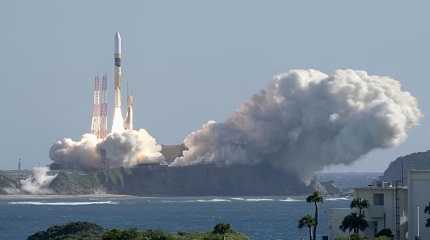
TOKYO, Jan 18 (Reuters) - Japan aims to become the fifth country to put a spacecraft on the moon when it attempts a precision landing on Friday, in what would be a boost for a space programme that has suffered a wave of setbacks and been eclipsed by rival China.
Dubbed the "moon sniper", the Japan Aerospace Exploration Agency (JAXA) probe is attempting to land within 100 metres (328 feet) of its target, a technology JAXA says is unprecedented and essential in the search for moon water and human habitability.
Japan is increasingly looking to play a bigger role in space, partnering with close ally Washington to respond to China's military and technological might, including in space. Japan boasts a number of private-sector space startups and aims to send an astronaut to the moon as part of NASA's Artemis programme.
But JAXA has faced multiple setbacks, including a launch failure in March of the new flagship rocket H3 that was meant to match cost-competitiveness against commercial rocket providers like SpaceX.
JAXA's Smart Lander for Investigating Moon (SLIM) probe will start a 20-minute touchdown phase on its one-way mission from midnight on Saturday (1500 GMT Friday), trying to land on a target site roughly the size of two athletic tracks on the slope of a crater just south of the lunar equator.
"No other nation has achieved this. Proving Japan has this technology would bring us a huge advantage in upcoming international missions like Artemis," said Shinichiro Sakai, JAXA's SLIM project manager.
India's Chandrayaan-3 in August made a historic touchdown on the moon's south pole, a major technological feat given the rough terrain, highlighting India's rise as a major player in space.
JAXA stresses its high-precision technology will become a powerful tool in future exploration of hilly moon poles, seen as a potential source of oxygen, fuel and water. Japan also plans a joint unmanned lunar polar exploration with India in 2025.
"For lunar project development, Japan can't beat the U.S., China or India in terms of resources," said Kazuto Saiki, a Ritsumeikan University professor who developed SLIM's near-infrared camera that will analyse moon rocks after the landing.
"We should focus on building sought-after technologies like the pinpoint landing and near-infrared cameras which overseas exploration projects will strive to adopt."
JAXA has twice landed on small asteroids, but a moon landing is much more difficult due to its gravity, as seen in a number of recent failures.
Last year, a probe belonging to Japanese startup ispace inc (9348.T), opens new tab crashed onto the moon's surface, and Russia's Luna 25 followed suit. A lander from American startup Astrobotic last week suffered a fuel leak, forcing it to abandon a touchdown attempt.
"Mistakes happen, but Japan is a very experienced space power - it's conducted very complicated space operations for many years," said Bleddyn Bowen, a University of Leicester associate professor specialising in space policy.
"Not as big as the United States or the Soviet Union of old or China today in terms of scale, but in terms of capability and niche advanced technologies, Japan has always been there."
SLIM's precision landing "won't be a game changer", but the demonstration of it and the lightweight probe manufacturing Japan has pursued might open up moonshots to space organisations worldwide by reducing the cost of each mission, Bowen added.
JAXA says it will take up to a month to verify whether SLIM has achieved the high-precision goals after touchdown.
On landing, SLIM will also deploy two mini-probes - a hopping vehicle as big as a microwave oven and a baseball-sized wheeled rover - that will take pictures of the spacecraft. Tech giant Sony Group (6758.T), opens new tab, toymaker Tomy (7867.T), opens new tab and several Japanese universities jointly developed the robots.




